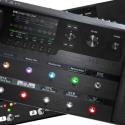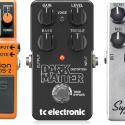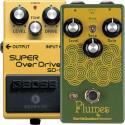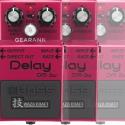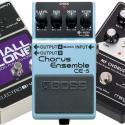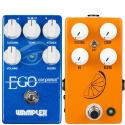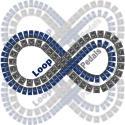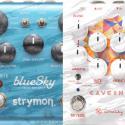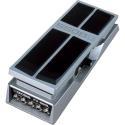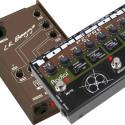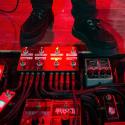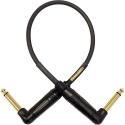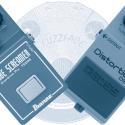The Best Guitar Pedals: Eleven Essential Effects
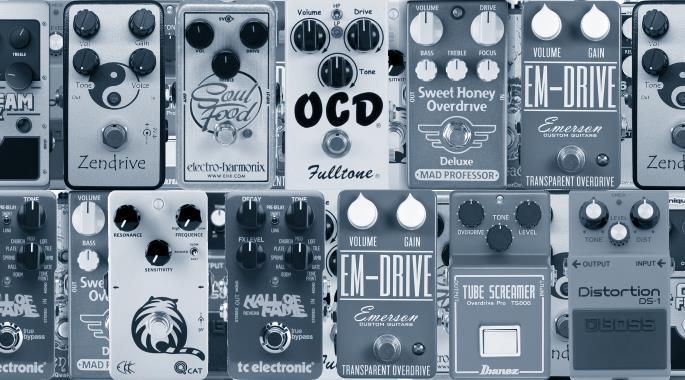
More Guitar Pedals
The guitar is unique in that its tone can be manipulated to a greater degree than just about any instrument out there. We can distort it and modulate it to our hearts content. When the right effects are used, the possibilities are endless.
However, because so many are available it can be hard to find the best guitar pedals for your rig. If you’re not sure which pedals are going to be right for you, or which model is going to be the best bang for your buck, check out the list below!
The Effects
Collected below are the effects that you’re most likely going to need at one point or another in your playing. Some niche effects, like ring modulators for example, have been omitted. We’ve included descriptions for each effect as well as a highly rated example of it (from one of our Gear Guides, when applicable).
-
Vibrato
So as explained above, chorus is two signals. One signal is your normal tone, the other is delayed to modulate its pitch. With vibrato, it’s your main signal that’s modulated. Note: tremolo is actually a modulation in volume. Fender’s tremolo bar/mechanism is actually misnamed.
There’s not a ton of examples of this effect being used, but they exist. It’s the same sound you get with a whammy bar, so for a lot of people there’s not much of a reason to get the effect. The video for below is for the Boss VB-2, which while not our featured effect, is a good example of the effect.
-
Flanger
Flanger is hard to describe, it kind of sounds like that “swooshy” sound you get when a jet takes off. The effect is actually way more widespread than most people assume, and it goes back a long way. It’s invention is credited to Les Paul, who reportedly discovered it in the late 1940s.
The Beatles also used the effect extensively, with the all of the vocals on their album Revolver having been subject to the effect. For a good listening example, check out the video below.
-
Phaser
Phaser is somewhat in between the sound of a wah and a chorus pedal. It’s not the easiest effect in the world to describe, so check out the video below for a good listening example.
Phaser has been used throughout the years on really notable songs, some good examples of which are: Brian May on Sheer Heart Attack, Eddie Van Halen in Eruption, and Jonny Greenwood on Paranoid Android.
-
Room/hall:
Emulates the sound bouncing around a room, like the example in the first paragraph. Room-emulation is more subtle and focused, while hall emulation is more dramatic. These types of reverbs are great for adding realism to the sound of regular amps and Headphone Amps.
-
Plate:
Plate reverb was one of the first mechanical means of producing reverb. The way it worked is that a plate of steel was suspended in a frame with a speaker attached to one end and a microphone on the other. The sound would travel through the plate which, when picked up by the microphone, would give the impression of reverb. Plate reverb has a very bright presence.
-
Spring:
Spring reverb is when an electrical signal fed through springs. It has a “splashy” sound, with a great example of it being Dick Dale’s guitar work (or any other surf band really). It’s often built into nicer Fender amps.
-
Who Uses Reverb?
Just about everyone uses reverb. Its basic function is to fill out the tone, which gives it more depth. A completely dry signal can sound sterile, because the human ear is used to natural reverberation in certain settings. Another use of reverb is using the effect to produce ambient soundscapes. The perfect example of this would be David Gilmour’s work with Pink Floyd.
Distortion

Distortion is the most widely used effect in the music industry. It’s an effect synonymous with rock and roll, metal, grunge, and punk rock. Great examples of awesome distortion would be AC/DC, Aerosmith, Nirvana, and Jonny Greenwood of Radio Head (though there are hundreds of others).
However, distortion is kind of a confusing term. The clinical definition of it is: “the effect of clipping an instrument’s sound, resulting in extra sustain as well as harmonic and inharmonic overtones.” Though this describes distortion as a process, and not as an effect.
When we talk about distortion as an effect, we’re talking about a dramatic overdrive (which is a term we’ll define later in the article). For now, think of overdrive as being more for blues guitarists and distortion as being for rock and metal. If you want to play rock, you want something that’s marketed as the best distortion pedal. Not an overdrive, or a fuzz.
Suggested Pedal to Try: Boss DS-1
The Boss DS-1, while only $50, is a piece of live music equipment that’s been used by a ton of famous guitarists. Notable users include: Kurt Cobain, Joe Satriani, Steve Vai, Glenn Frey, and Josh Klinghoffer. It’s earned the best value spot in this section by being a sub-$100 pedal that professional musicians actually use.
When looking at the pedal without the bias associated with its pedigree, it’s actually a surprisingly versatile piece of equipment. It produces a very thick and harmonically rich distortion, and when the distortion is dialed in to more moderate levels it can even conjure up a pretty convincing overdrive effect.
The only thing to be wary of with this pedal is that if you’re looking to play modern metal, it may not produce enough gain. If you’re interested in the pedal but worried it may not have enough gain on tap for what you want to play, check out the Boss DS-2.
See our proper Gearank analysis of the Boss DS-1.
Overdrive

So as discussed above, overdrive is a more subtle implementation of distortion. It can be achieved by playing tube amplifiers at loud volumes or by using the best cheap overdrive pedal. Most blues guitarists favor overdrive over distortion, especially when they achieve it with a tube amp as opposed to a pedal.
Something that should be noted about this effect is that it’s been used in two different ways. The first is as a boost, which pushes a tube amp into overdrive by increasing its volume. The second is to use the gain circuit on the pedal to produce overdrive. The first way of utilizing the effect retains more of your amp’s sound, while the second allows you to achieve higher levels of distortion.
Suggested Pedal to Try: Ibanez TS9
The Ibanez TS9 is to overdrive in the same way as the Boss DS-1 is to distortion. The effect’s trademark mid-range response produces a tone heard on countless records. Some good example of guitarists who’ve used the effect are: Kenny Wayne Shepherd, Buddy Guy, Gary Clark Jr., Stevie Ray Vaughn, and Carlos Santana. This model is a reproduction of the original TS9, so it will allow you to get tones reminiscent of those above.
Like the Boss DS-1, when looking at this pedal without rose tinted glasses it’s still a really good piece of equipment. It has a mid-range hump that helps your tone cut through a mix, and the gain control can take the pedal from very subtle levels of overdrive to light a distortion.
See further details at Ibanez.
Boost

As described above, a function of an overdrive pedal is that it can boost your signal to drive a tube amp into overdrive. However, doing this will still impart the pedal’s tone onto your signal. If you’re looking to boost your signal, thus driving your amp to overdrive, you’re going to want a boost pedal.
Note, if you do not have a tube amplifier you’re not going to get much out of a boost pedal. It will raise your volume, but it won’t give you any overdrive. You can use it to make a distortion or overdrive pedal distort more, you just won’t get a tube overdrive.
Suggested Pedal to Try: MXR M133 Micro Amp
The MXR M133 is a very minimalist boost pedal, perfect for those who are looking for a boost pedal that won’t have an impact on their tone. The build quality is great and the reception is stellar, which is pretty par for the course when it comes to MXR.
Thankfully, because this pedal is so simply designed it will function well for just about every situation where a clean boost is required. It may be a bit more expensive than entry-level clean boosts, but at the same time it’s also better built.
See further details at JimDunlop.com.
Delay

Delay is an effect where your signal is reproduced and then played again. Think of it like this: Imagine you’re in a canyon and you yell. You’re going to hear echoes of your voice, right? That’s essentially what delay is.
The best delay pedals are widely used in everything from country to metal. For the former, think of Johnny Cash’s Folsom Prison Blues. If you listen to the lead guitar, you’ll notice it kind of has a train-like rhythm. That’s called slapback delay. In metal, the effect is used in a way similar to reverb to fill out the tone. You can of course use it in more atmospheric or interesting ways, like Sublime’s April 29, 1992.
There are two main types of delay: analog and digital. This is covered above, but to briefly reiterate analog sounds warmer and more “organic”, while digital is brighter. Digital also offers more fidelity over adjustments in delay times as well as a longer delay time overall. For more information on delay pedals, check out our guide: The Best Delay Pedals - Analog & Digital.
Suggested Pedal to Try: TC Electronic Flashback
Featured in our delay pedal guide, the TC Electronic Flashback Delay and Looper is a great option if you’re just starting out. It has eight distinct delay models out of the box, a looper (though a limited one), and access to the TonePrint software.
With that being said, it’s not the best sounding unit available (though it is a viable option for performance). It’s a “jack of all trades, master of none” scenario. If there’s a particular sound you’re looking for, figure out the exact pedal used by people in that genre and then start looking for cheap versions of that.
On the other hand, if you don’t really know what you want yet you’ll probably get a lot of enjoyment out of the TC Electronic Flashback. It does have a lot of cool tones on tap, ranging from a pretty convincing analog to dreamy modulated delay (where the delayed signal is modulated, generally with chorus).
The delay functionality is so-so. So, as we stated in the guide, don’t get this pedal is you want a dedicated looper. The looping is really limited, so while the effect is pretty good overall it’s not really a good example of a two-in-one unit. The pedal is also true bypass.
See a regular Gearank analysis of the TC Electronic Flashback.
Chorus

Chorus is a slightly delayed signal, and as the delay times are shortened or lengthened the pitch is raised or lowered. Chorus pedals were used extensively in the 80s to create a spacey, thickening effect. Though it’s been used by different artists in different ways, generally to give the guitar a unique tonality. A great example of this is Nirvana’s Come As You Are, which is arguably the defining chorus tone for a decade’s worth of musicians.
Unlike delay where digital is preferred, analog is generally considered to be the better sounding option for chorus. It sounds darker, so it does a better job of “filling” out the tone. However, digital chorus is a good option if you’re looking for a very bright and clear modulation. Many digital choruses also have settings to emulate their analog counterparts, though they do so with varying levels of success. For more information on chorus pedals, check out our guide: The Best Chorus Pedals - All Price Ranges.
Suggested Pedal to Try: Electro-Harmonix Small Clone
The Electro-Harmonix Small Clone was used by Nirvana’s Kurt Cobain. The pedal ranges in tone from the heavily modulated and swampy tone found on Come As You Are to surprisingly subtle tones. As stated in our article The Best Chorus Pedals- All Price Ranges, the pedal is deceptively versatile. The controls all work together to cover a pretty wide range of tones, and due in large part to the pedal’s analog construction all of them sound really good.
The pedal, while highly regarded, is also affordable. It’s a great option if you’re looking for an awesome tone on a budget. The pedal is also true bypass.
When arranging your effects pedals on your board, you might also want to consider the best volume pedal. Having control over your volume in real-time give you control over your performance. Now, let’s explore the realm of modulation with other effects like vibrato, flanger, and phaser.
See a proper Gearank analysis of the Electro-Harmonix Small Clone.
Other Modulation Effects

Since other modulation effects are less common than chorus, this section is going to be a bit different than the ones that preceded it. Below are definitions for the effects and genres/songs they’re found in. For the sake of brevity, and because many of these effects aren’t widely utilized, we’ve included one of the best multi-effects pedals instead of individual effects.
Suggested Pedal to Try: Donner Mod Square
In this category, Donner is a stand-out manufacturer. Their pedals have received awesome reviews across the web. They’re all true-bypass and feature metal casings, which for pedals in their price range is really impressive. Even more impressive, they’ve managed to bring a catch-all modulation pedal to the market for $40.00 (current price, may be subject to change) called the Donner Square Mod.
The models included are: chorus a, chorus b, phaser, tremolo, rotary, vibrato, and flanger. By now, you may be asking, “Well if the pedal’s so great why isn’t it the featured model for the chorus section too?”. Well, the issue is that the tone isn’t all that great.
For any effect that you’re going to be using a lot of, you’re better off getting a stand-alone effect. However, the phase and flange models are both convincing enough that they’d be good enough for occasional use. The same thing goes for the vibrato mode. The rotary effect, a simulation of a Leslie cab, is decent if limited in application.
Get further details at Donner.
Compression

Compression is an effect that makes quiet signals louder and louder signals quieter, smoothing everything you play into a more uniform volume. The severity to which this is done depends on how you use the effect. It’s great if you sweep pick, chicken pick, or play a lot of legato.
From country to metal, compression is used in just about every genre; especially by lead guitar players. The effect can help to balance the output of your thickest and thinnest strings, giving you a consistent volume for solos. For more information on the effect, check out our guide: The Best Guitar Compressor Pedals.
Suggested Pedal to Try: Mooer Yellow Comp
The Mooer Yellow Comp is great if you’re looking for an entry-level pedal to use in a limited capacity. The pedal comes in a petite metal casing, is true bypass, and is versatile enough to be used in most situations.
The only flaw with the pedal is that it does not come with attack and release controls. Attack controls how fast the compression acts on a signal, and higher release times control how soon the effect stops acting on a signal once it has reached the specified volume level. This isn’t a deal breaker, but it does limit the extent to which you can dial in how the effect will respond.
See our regular Gearank analysis of the Mooer Yellow Comp.
Looper

A looper pedal is a device you use to record a signal and then play it back on a loop. The effect can be used to create full-scale arrangements live with a single instrument (or multiple instruments, depending on the looper), or it can simply be used to lay down a rhythm track that you can practice lead guitar over.
The important thing to remember about loopers is that if you want to use them in a more advanced way, like in the video below, you’re going to need to buy an expensive looper. If you’re going to use it in a more limited capacity you don’t stand to gain a lot from buying a looper with more features. The sound they produce is dependent on your rig as opposed to the pedal itself, so you don’t need to worry about spending a set amount to get a good tone quality (unlike distortion or modulation effects). If you want to shop around a bit more (we’ve only featured two units in this piece), check out our guide The Best Looper Pedals – Compact & Multiswitch.
Suggested Simple Looper Pedal to Try: Ditto Looper
The Ditto Looper is a simple, well-built piece of equipment. It features two controls, an activation switch and a loop level knob (which control the volume of playback). You use the activation switch to turn the pedal on, record, and overdub. For a pedal of this size and price bracket, the Ditto Looper is surprisingly powerful. It features 5 minutes of recording time, which is perfect for practice. It also has a very small footprint, which you’ll appreciate if you either have or are planning on buying a lot of pedals. Lastly, the Ditto is true-bypass. So you can leave the pedal in your signal chain without having to worry about it impacting your tone.
Get a regular Gearank analysis of the Ditto Looper.
Suggested Feature Rich Looper Pedal to Try: Boss RC-300 Loop Station
The Boss RC-300 is as fully featured as a looper can get. It’s considered to be one of the best pedals in the field, making it a great choice for those of you who are serious about using a looper. The pedals allows you to produce three stereo track simultaneously, and move in between them. This lets you overdub, remove, and record tracks without having to start from the beginning. The unit also comes with 8 built in effects, allowing you an almost unparalleled level of control over your loops.
Get our regular Gearank analysis of the RC-300 Loop Station.
Wah

A wah pedal is an effect that moves your peak frequency response as you rock the pedal, emphasizing bass frequencies on one end and treble frequencies on the other. The pedal creates a “wah-wah” sound, so the name is actually onomatopoeia.
Most people associate the wah with funk. If you think of a stereotypical funk sound, odds are you’re thinking of a really clean guitar with the wah effect being used. However, the effect is also widely used in metal and rock (Kirk Hammett and Slash being two notable examples).
Here’s a video that does a great job of illustrating how the effect sounds.
Suggested Pedal to Try: Dunlop GCB95
The Dunlop Cry Baby Wah, though not the first instance of the effect, is the standard against which all others are judged. It’s the design that’s sponsored to the most imitators, and after more than fifty years in production is still widely used.
This wah is included because it’s both affordable and is going to give you a classic response. If you’re looking to emulate different players, this wah is going to be your best bet. With that being said, while it is a classic different wahs have surpassed it. There are more expensive pedals that allow you to adjust the sweep of the effect, wahs that are more durable, and even wahs that come with built in effects. However, for the best combination of tone quality and affordability, the Dunlop Cry Baby Wah GCB95 still reigns supreme.
Fuzz

While fuzz is usually lumped in with distortion and overdrive, in practice it is actually an effect that’s distinctive from either. It was intended to replicate the raspy sound of a saxophone, as opposed to distortion and overdrive which were intended to recreate the sound of a highly driven tube amp.
Because of this, the effect is very “ragged” sounding. It fits in great with lo-fi genres of music, blues rock especially. Jimi Hendrix, Jack White, and the Black Keys used the effect extensively. The effect can be used as an alternative to distortion, though your experience with this is going to vary based on the genre you play.
Suggested Pedal to Try: Big Muff Pi
When guitarists think of a fuzz pedal, the Big Muff Pi is usually the first that springs to mind. The effect has graced the pedalboards of numerous famous musicians, including: Jack White and David Gilmour. The possibility that Jimi Hendrix used one in the studio exists, though it isn’t very likely.
The Big Muff owes its success to its construction. The first stage of the pedal is a clean boost, which drives two distortion stages after that. The unit also has a tone recovering stage, which boosts the tone lost during the two distortion stages. The construction of the Big Muff gives it a very strong bass focus, which creates a very full distortion tone. When combined with brighter instruments it creates a tone that’s both full and cutting, hence its widespread adoption.
The only flaw with the pedal is that in some situations it can become muddy in a mix. The pedal’s greatest strength is its greatest weakness, because that depth of tone it produces can conflict with the bass. So take care when dialing in its tone if you’re playing in a group.
Reverb

Reverb is an effect that makes your amp sound like you’re playing in a large room. A good example of it the effect would be walking in a large, empty building. You’ll hear the sound of your footsteps bounce off the walls. For more information on reverb pedals, check out our guide: The Best Reverb Pedals for Guitar.
There were three common ways of producing reverb in the studio that current effects are based on: room/hall, plate, and spring. Check out the definitions below:
Suggested Pedal to Try: TC Electronic Hall of Fame Reverb
The TC Electronic Hall of Fame Reverb offers a great combination of versatility and affordability. It provides 10 different voices pre-loaded on the pedal, along with one TonePrint voice. TonePrint is a software that allows you to edit and tweak different parameters, essentially allowing the pedal to mimic any other reverb you can conceive of. There are also a ton of presets for different artists, which is great if you’re hunting down a specific sound.
Looking for the best vocal effects pedal? Check out our comprehensive guide on finding the perfect vocal effects pedal for your needs.
This particular pedal was included over those with a higher Gearank score because it allows you to experiment with different types of reverb and tweak them to your taste. There may be pedals that sound better (though this is subjective), but few allow you this much control over your tone at this price point. The TC Electronic Hall of Fame Reverb is true bypass.
See a full Gearank analysis of the TC Electronic Hall of Fame.
Tremolo

Tremolo is an effect that increases and decreases volume at a set rate. The effect has been used extensively for decades, but its most notable example in the last few years would be Green Day’s Boulevard of Broken Dreams. Howlin For You by The Black Keys is another great example, though not as widely known as Boulevard of Broken Dreams.
Tremolo is a bit like the phaser and flanger in that it doesn’t really have a lot of uses. It’s a cool effect when used tastefully, and it can give songs a really unique texture. But it’s not like delay, chorus, or reverb, because it’s not going to be an asset to your tone overall.
Suggested Pedal to Try: Joyo JF-09
Tremolo may be a rarely used effect, but because of its simplicity you don’t have to spend a lot of money to get a great tremolo pedal. Case in point, the Joyo JF-9. For the price, it’s hard to beat the Joyo JF-09. The tone quality is superb, the pedal comes with a metal casing, its true bypass, and it even has an LED that displays the effects timing (this feature in particular is a lifesaver, because it makes dialing in the effect to a song’s tempo a breeze).
The only bad thing about the pedal is that it doesn’t do the “on-off” sound heard in Boulevard of Broken Dreams. If this is the type of effect you’re after, you’re going to want to look up a “square-wave tremolo pedal”. The Joyo JF-09 is a triangle waver tremolo, so it gives a lighter more “fluttery” tone.
When considering your guitar pedal order, you should think about how each effect contributes to your overall sound. Experimenting with different arrangements can help you develop some unique styles.
Get further details from JOYO.



